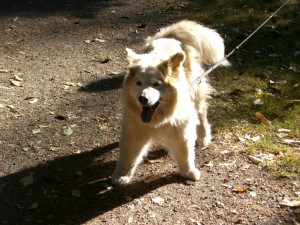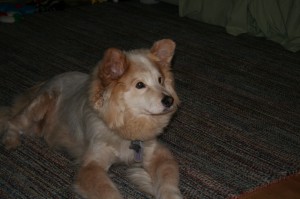Bu Zhong Yi Qi Tang – Chemotherapy herbal support for dogs and cats
Saturday, September 24th, 2011Bu Zhong Yi Qi Tang is one of the formulas I take myself when I’ve been under too much stress and my adrenals are a little deficient. It has a deep root flavor with just a hint of citrus – yum!
In my practice, this is the main formula I use for chemotherapy support. Bu Zhong Yi Qi Tang helps to support digestion, the immune system, blood cell counts, and adrenal function in the body and at the same time has some strong anti-cancer herbs.
So what is in Bu Zhong Yi Qi Tang?
- Huang Qi – Astragulus
- Bai Zhu – Atractylodes
- Gan Cao (sometimes Zhi Gan Cao is used instead) – Licorice
- Ren Shen – Ginseng
- Chen Pi – Tangerine peel
- Dang Gui – Chinese angelica root
- Chai Hu – Bupleurum
- Sheng Ma – Black cohosh
In 2007 a study was done out of the University of Minnesota by K. HWa Choi DVM. This study looked at dogs being treated with chemotherapy (including doxorubicin) for lymphoma and the side effects from treatment. It was found that dogs administered BZYQT had much less diarrhea and vomiting then dogs getting just chemotherapy. They also did much better than dogs getting chemotherapy and western drugs to control vomiting and diarrhea. In addition the dogs on BZYQT had better appetites. BZYQT also significantly raised white and red blood cell counts. Overall the dogs getting chemotherapy and Bu Zhong Yi Qi Tang did much better than dogs just getting chemotherapy or those being treated with western drugs for the side effects.
Not bad for an herbal therapy!
There has also been some success in the herbal veterinary community with this herbal to help manage hemangiosarcoma.
So how does it work?
 Bupleurum has some amazing cancer fighting abilities. Bupleurum can induce apoptosis or cell death in cancer cells and inhibit cancer cell growth and division. Many studies have been done on this plant especially for lung cancer.
Bupleurum has some amazing cancer fighting abilities. Bupleurum can induce apoptosis or cell death in cancer cells and inhibit cancer cell growth and division. Many studies have been done on this plant especially for lung cancer.
Many of the herbs in this formula work in pairs. Astragulus and ginseng strongly support the immune system and have direct anti-cancer effects. Ginseng and licorice support adrenal function. Dang Gui with Huang Qi stimulates the bone marrow to increase blood cell production. Licorice and tangerine support digestion.
This formula also works to increase peripheral circulation and can help to prevent some skin and nail inflammatory disorders. Many animals with deficient immune function also do well on this formula. I also often use it to support animals with deficient adrenal function (Addison’s disease). Some of its other uses are for incontinence and prolapse.
In Chinese medicine terms Bu Zhong Yi Qi Tang lifts up sinking qi, supports the liver and spleen and tonifies lung qi.
When do I use this formula?
 Any dog or cat getting chemotherapy which includes the drug doxorubicin also known as adriamycin should be on this formula. This drug is one with the most potential for side effects and Bu Zhong Yi Qi Tang can help reduce these.
Any dog or cat getting chemotherapy which includes the drug doxorubicin also known as adriamycin should be on this formula. This drug is one with the most potential for side effects and Bu Zhong Yi Qi Tang can help reduce these.
I also use it for dogs or cats on other chemotherapeutic agents who are having side effects or problems maintaining cell counts.
In addition I will sometimes use this formula in very debilitated animals to help them gain strength and balance. I currently have one dog I treat who has a weakened immune system and is prone to getting nail bed infections that turn to cancer. He had lost three toes to this process before we found a protocol which included his formula.
How is Bu Zhong Yi Qi Tang dosed?
I usually dose it twice a day and use powdered whole herbs in my patients. I use 1/8 teaspoon once or twice a day for cats and small dogs, 1/4 teaspoon twice a day for dogs up to 25 lbs, and 1/2-1 teaspoon twice day for larger dogs. For tea pills use 2,4, or 8 twice a day for the above sizes of animals.
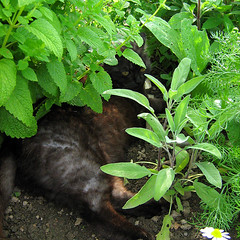 If I am using a tincture I use 0.2ml per 5lb once a day.
If I am using a tincture I use 0.2ml per 5lb once a day.
Many companies will substitute Codonopsis (Dang Shen) for ginseng (Ren Shen). If at all possible use a product that has ginseng as it is a much stonger and more powerful herb than codonopsis.
You can now buy Bu Zhong Yi Qi Tang from my etsy store, Kingdom of Basil
As with all articles on this site, please check with your animal’s vet before starting any herbal treatments.
Return to Integrative and Holistic Methods for Treating Cancer in Cats and Dogs
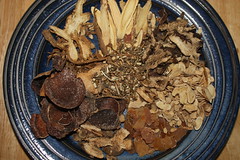
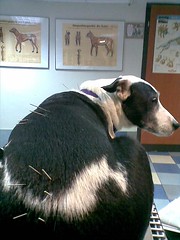
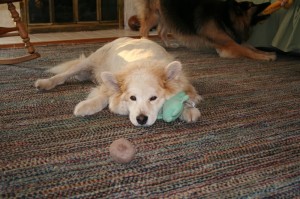 Rooney is unusual in that I only worked with acupuncture with her and not herbs. For most of the animals I treat I recommend an integrated approach that combined acupuncture, herbs and often times some western treatments as well.
Rooney is unusual in that I only worked with acupuncture with her and not herbs. For most of the animals I treat I recommend an integrated approach that combined acupuncture, herbs and often times some western treatments as well.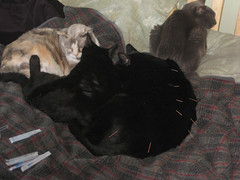
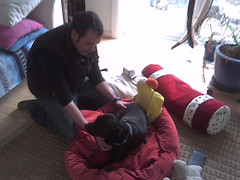
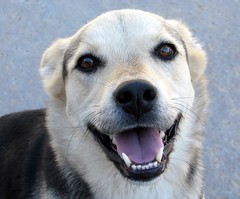
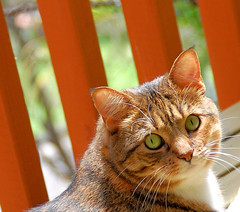


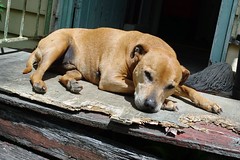


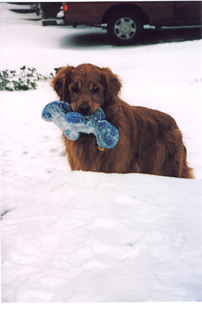 Maggie tries really hard to be a good guard dog. When you come to the door of her home, you can hear her barking in a strange muffled way, which makes you wonder until the door is opened and you realize she has a teddy bear in her mouth. That being said Maggie loves people and once she meets you she is all smiles, teddy bear or no teddy bear. Maggie has a way of smiling with her eyes that just draws people in.
Maggie tries really hard to be a good guard dog. When you come to the door of her home, you can hear her barking in a strange muffled way, which makes you wonder until the door is opened and you realize she has a teddy bear in her mouth. That being said Maggie loves people and once she meets you she is all smiles, teddy bear or no teddy bear. Maggie has a way of smiling with her eyes that just draws people in.
